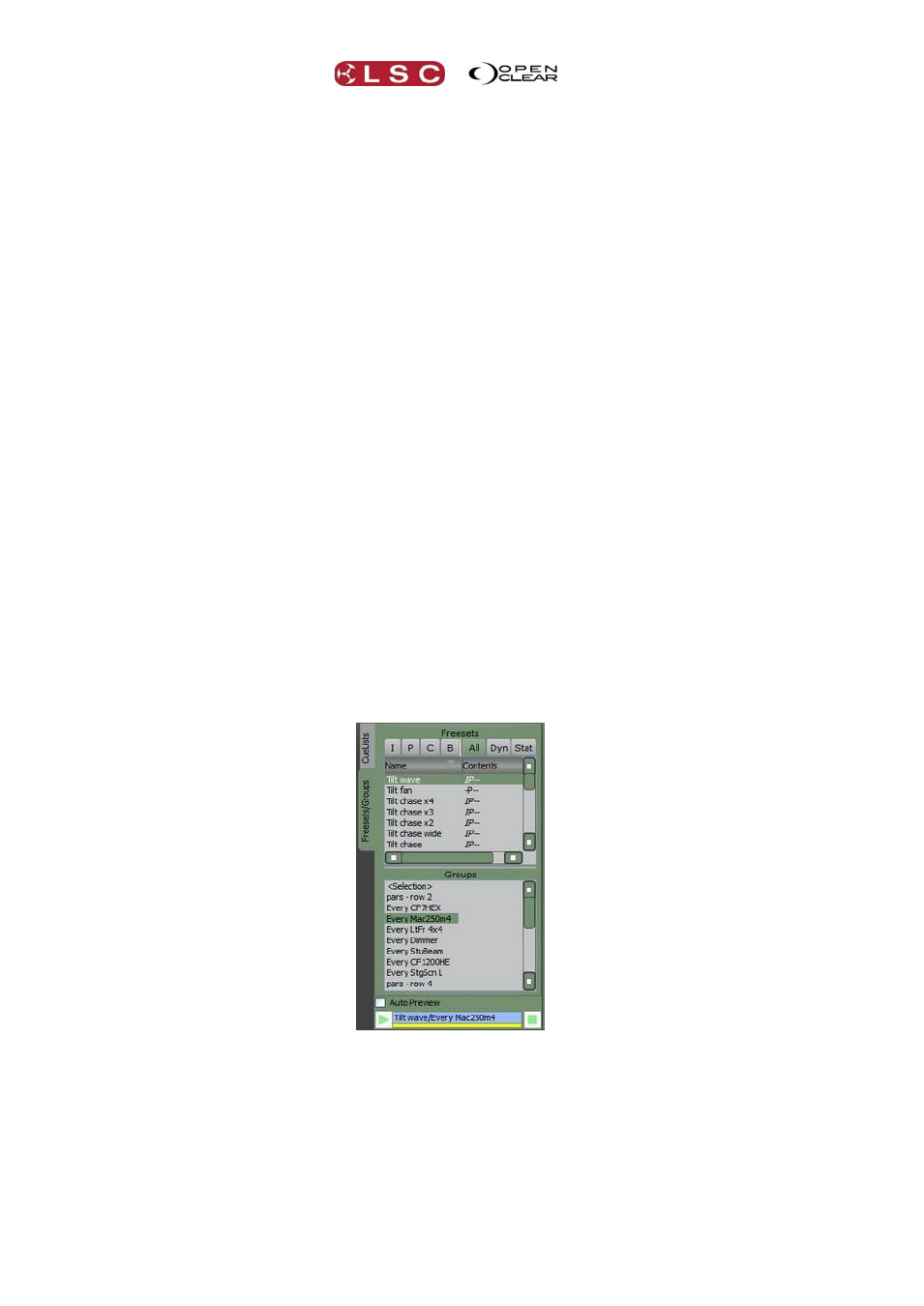1 metronome settings, 7 performance freesets/groups – LSC Lighting CLARITY LX Series v.1 User Manual
Page 204

Performance Window
Clarity
Operator Manual
Page 194
27.6.1 Metronome Settings
Time sig: Time signature allows you to select the number of beats within a bar, 2/4,
3/4, or 4/4.
BPM: (Beats Per Minute) is the tempo of the metronome. Set the tempo by either
entering a BPM number or by using the <tap> button to set the tempo rhythmically.
The first tap sets the down beat and subsequent taps will modify the tempo. The more
taps in succession the more accurate the tempo will be. You can also use the keyboard's
Ins (insert) key to tap the tempo
Stop: Metronome stops and the song position will start from 0.0 the next time that the
play button is pressed.
Pause: Metronome pauses and retains the song position count.
Play: Starts the metronome.
Song position: Displays the current bar and beat
Quantize: Controls the boundary to provide exact trigger timing. This can be used in
conjunction with the cell's Trigger options (Immediate, Next Boundary or Immediate
Adjusted) to synchronize stepping of multiple cells. For example, if quantize is set to 1
bar, then the next boundary is when the song position reaches the start of the next bar.
If quantize is set to ¼ note then the boundary is the next down beat.
27.7 PERFORMANCE FREESETS/GROUPS
The Freesets/Groups tab at the top left of the performance window offers a rapid method of
putting together clips by combining freesets and groups and playing them from a cell in the
Performance grid.
Select a group of fixtures from the Groups pane and a Freeset from the Freesets pane. Drag
either the selected group or Freeset and drop it on the desired cell in the grid. The selection
that you drag will take the other selection with it.
The I,P,C,B (Intensity Position, Colour, Beam) buttons can be used to filter the attribute of the
selected Freeset that you want to apply to this clip.
The cells containing these clips can be manipulated in exactly the same ways as cells containing
cue-lists as described above.